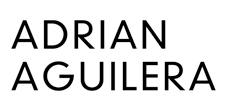© 2006 - 2025 Adrian Aguilera
Built with Indexhibit
thrivance
thrivance
Herbert F. Johnson Museum of Art, Cornell, Ithaca, NY
Mar 26, 2024–May 19, 2024
thrivance is a student-led curatorial intervention and the capstone project from the Fall 2023 curatorial practicum, “Curatorial Practice as Entanglements” (ARTH 4110/6010). Students in this seminar curated artworks from the collections of the Johnson Museum of Art and the Cornell Fashion + Textile Collection inspired by the Indigenous concept of thrivance, introduced by College of Human Ecology graduate student Shawkay Ottmann (Anishinaabe from Fishing Lake First Nation).
thrivance transcends Anishinaabe literary scholar Gerald Vizenor’s concept of “survivance,” which marked Indigenous resilience as an anti-colonial tactic against settler colonialism. Thrivance—coined by Dr. Jacqueline Ottmann (Anishinaabe from Fishing Lake First Nation), president of First Nations University of Canada, in collaboration with Dr. Derek Jennings (Quapaw and Sac and Fox), University of Washington—is described as:
“thrivance moves beyond the concept of survivance. Where survivance emphasizes the fluid and intertwined relationship between survival and resistance and celebrates the existence of Indigenous peoples despite the continuous onslaught of overt and covert violence through legislation and societal marginalization, thrivance embodies Indigenous ways of being, knowing, and doing, and centers and draws from the sophistication of Indigenous intellect and spirituality for wellness and complex challenges.”
The interpretation of thrivance in this installation encompasses artworks selected from global Indigenous communities as an intersectional world-making curatorial strategy. It is meant to interrogate the Johnson Museum collection and reimagine the role of curators in anticipation of an anti-colonial future. Master of Fine Art (MFA) graduate students Adrian Aguilera and Shelia Novak responded by creating original artworks based on their artistic practices.
The seminar was led by Jolene Rickard (Tuscarora Nation), associate professor in the Departments of Art and the History of Art & Visual Studies and in the American Indian and Indigenous Studies Program at Cornell, and Gemma Rodrigues, the Ames Director of Education and Curator of the Global Arts of Africa at the Johnson Museum. Special thanks are extended to Associate Professor Denise Green in the College of Human Ecology and Steven Henhawk from the Gayogo̱hó:nǫɁ – Cayuga Nation.

